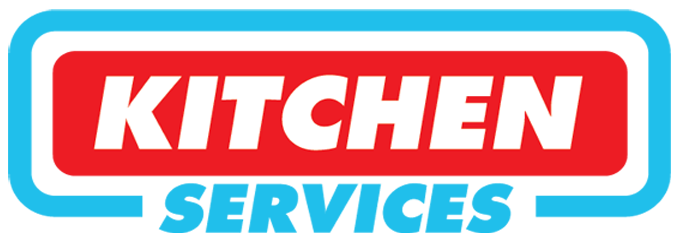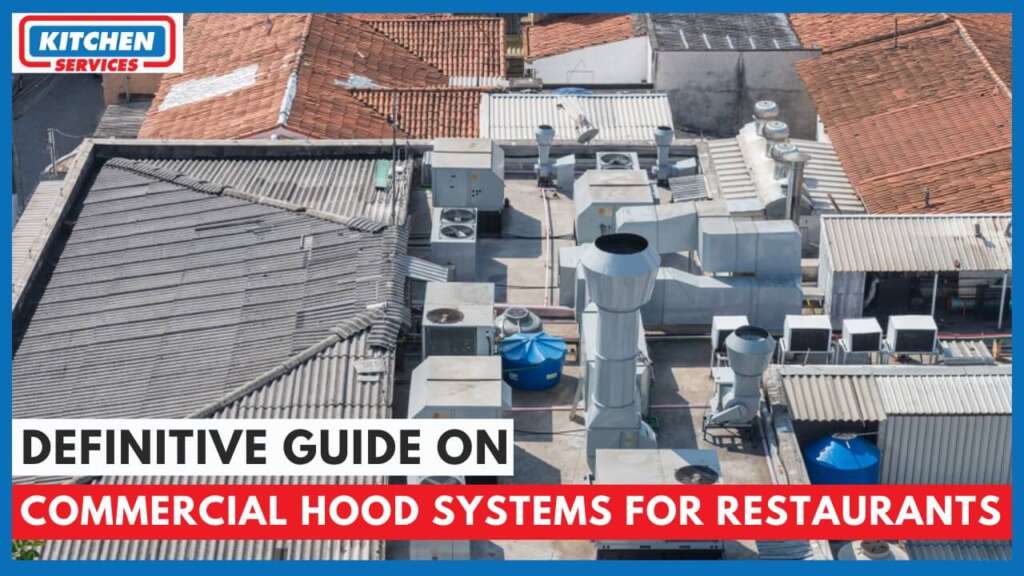A properly installed Commercial Hood Systems for restaurants helps in keeping the cooking exhaust, chemicals, and smoke out of your kitchen. It is considered to be the best as it improves your indoor air quality as well as simplifies your cooking experience. It depends on the area where you live, you may require a range hood for your commercial kitchens. Keep reading the commercial hood systems guide for detailed information.
What is a Restaurant Hood System?
A restaurant hood system is a type of ventilation that removes smoke, fumes, and heat from the kitchen, replacing it with fresh air. It includes the hood, which collects the air, an exhaust fan that pulls the air out, and a makeup system that brings in fresh, temperature-controlled air to keep the kitchen comfortable and balance air pressure.
Hood systems are essential for preventing the buildup of heat, smoke, and grease. Grease can pose a fire hazard if not properly removed, so a well-functioning hood system is crucial for safety, preventing fires, and ensuring a comfortable working environment.
Difference between ventilated and ducted hoods
Well, ducted hoods intend to eliminate the chemicals, and smoke out of your kitchen entirely. Ducted hoods are often preferable as compared to ventilated hoods. As the exhaust ducts are short it makes them even more effective if your hood is mounted to an outdoor wall. In case the hood is attached to an inner wall, the air will surely move at a distance for effective usage. Proper duct installation is considered very important for the dependability and overall effectiveness of your entire device. No doubt that these ducts operate on an outdoor rooftop, but they should never pass through an attic or basement of your building. Ducted hoods are very common in your commercial kitchens or even in your homes with a lot of types and ranges that tend to produce more smoke and generally produce more smoke and fumes. Because of the fact that duct hoods do not directly filter or circulate air, but they tend to fully unload the air from the kitchen, they are considered to be more effective in removing moisture and fumes from your cooking area.
Ducted vs Ventilated Kitchen Hoods – Complete Guide
Although, a lot of people say that exhaust systems that have ducts work a lot better than those without ducts. Though this can be debatable as every brand produces different kinds and sizes of hoods and you select according to your choice so some may be a lot noisier than the others, and some may work a lot better than the other, so this part is subjective. One of the few disadvantages of a ducted hood is that it mounts in an environment with a pipe system that goes from the inside to the outside of the building or home. This can restrict areas in the kitchen where your range and hood will actually be positioned.
Restaurant Hood Systems installation cost and time

The estimated cost of installing a kitchen hood totally depends on the type of the range hood, its exhaust system, and all the features that it can perform for your commercial kitchen. The cost ranges from $200 to $1000. Commercial hoods’ prices are comparatively on the higher sides. A large commercial Kitchen hood would take relatively longer to install as compared to a domestic Kitchen hood.
Contact expert Commercial hood installers in Los Angeles
Do’s of Restaurant Hood Systems Installation
- Go for a mounted kitchen hood in case you have a spacious kitchen.
- Try to pick somewhat accessible devices or touch screens for a relaxed time in the kitchen
- Normally it is advisable to vent vertically through the roof of your kitchen
- Try to keep 36-42” for venting purposes over the grill.
- Use plastic ducting.
- Keep 28-36” in between the bottom of the range hood and the top of the cooking surface.
- Try to use a metal HVAC ducting or electrified steel only if possible.
- For the best performance, try to use as few elbows as possible. Also, it has no more than three 90° elbows.
- Try to make use of caulking for sealing exterior openings that are around the cap.
- Always use HVAC tape for sealing joints that are there in the vent system.
- Do proper cleaning of duct to make sure that the airflow is effective.
The Do’s and Don’ts of Kitchen Hood Installation
The Don’ts of Restaurant Hood Systems Installation
- Don’t buy smaller kitchen hoods that down not fit your cooking range areas
- Don’t go for useless filters just because of the reason that they are low in cost.
- Try to avoid those kinds of chimneys that are too noisy and that can cause disturbance in your kitchen environment.
- Try not to use a flexible Duct as it will create friction for the airflow which can cause it to make noise and reduce its effectiveness.
- never terminate the range hood system into any confined space.
- Remember to avoid use of any sort of screens on roof jacks or wall caps. This can reduce the airflow by around 20-50%.
- Do not use plenum boxes.
- Avoid using roof jacks and wall caps with gravity dampers.
Restaurant Hood Systems Maintenance
The NFPA, with all of their requirements in order to clean kitchen hoods, in general, lays out suggested frequencies. You should always make sure that you include this in your restaurant cleaning checklist.
How to clean a Stainless Steel Commercial Range Hood?
Monthly Restaurant Hood Cleaning
It is commended that kitchens or cooking operations that use solid fuel should clean their hoods once in a month. Solid fuel indicates all the solid material that is burned to use while cooking, for instance, wood, charcoal, and coal.
Quarterly Restaurant Hood Cleaning
High-intensity functions that do not use solid fuel should go through quarterly commercial range hood cleaning. This is important for most of those restaurants that do not use solid fuel. This includes diners, short-order spots, and the enormous majority of commercial dining setups.
Semi-Annual Restaurant Hood Cleaning
Any cooking function with somehow mild volume or the volumes that are below that of an average commercial dining establishment should undergo semiannual restaurant hood cleaning.
Annual Restaurant Hood Cleaning
Any low-volume cooking systems such as in churches, day camps, seasonal businesses, or small restaurant operations in service during only special events all around the year.
Restaurant Hood Cleaning Service
Hood and Exhaust cleaning is very important in order for your restaurant’s proper functioning because it will promote a cleaner environment and air quality of your kitchen. This is the reason that these commercial kitchen services provide the best kitchen hood cleaning service. Many certified HVAC technicians can be the backbone of your organization. They thoroughly carry out your kitchen exhaust cleaning by using many professional tools.
Which Parts Of Your Commercial Kitchen Requires Hood Cleaning?

During any hood cleaning services, Kitchen Service mostly focuses on restaurant kitchen hood cleaning important parts that are as follows.
Fans of the Range Hood:
Keep this thing in mind that all these mechanical fans have a specific and a very important function to perform. They are made in such a way that they suck up the air from the ducts of the exhaust fan and out of your commercial kitchen. The service technicians very carefully disinfect and clean the mechanical fans in order to remove all the collected grease.
Filters of the Vent Hood:
Filters are the clear part of your range hood that is made up of stainless steel. Also, everything passes through these filters so they limit the opening in the ductwork and hold any kind of dirt from passing through mechanical fans. So, the question here arises: what is the best way to clean the kitchen hood filter? Well, in the case of Kitchen Services, the answer to this would be pretty much simple. The highly-skilled engineers separate the filters from the exhaust hood system very carefully. Then they separately concentrate on each component of your vent hood.
- Range Hood’s grease traps: Grease traps are actually the area where all the grubby grease of your cooking equipment gets collected. You will find tiny trays that collect grease on the inside of the ductwork. it is not very easy to remove that amount of grease as it is sticky as well. The professional techniques that include pressure washer, etc. they handle restaurant hood cleaning very effectively for their customers.
- Duct Work: Duct cleaning can be a total game-changer when we talk about kitchen hood cleaning services. The filters, grease traps, and fans are present inside the ductwork. These highly skilled HVAC technicians will handle the cleaning of your exhaust hood very carefully.
Contact for Expert Restaurant Hood Installation
Hood Systems for restaurants FAQs
How often should a commercial kitchen hood be cleaned?
It totally depends upon your cooking procedure; the cleaning pattern can differ from one another. For instance, in case you are using solid fuel in your range hood, then your kitchen hood would need a monthly inspection. Nevertheless, if you do not use solid fuels such as coal, charcoal, wood in that case you should go with quarterly cleaning.

